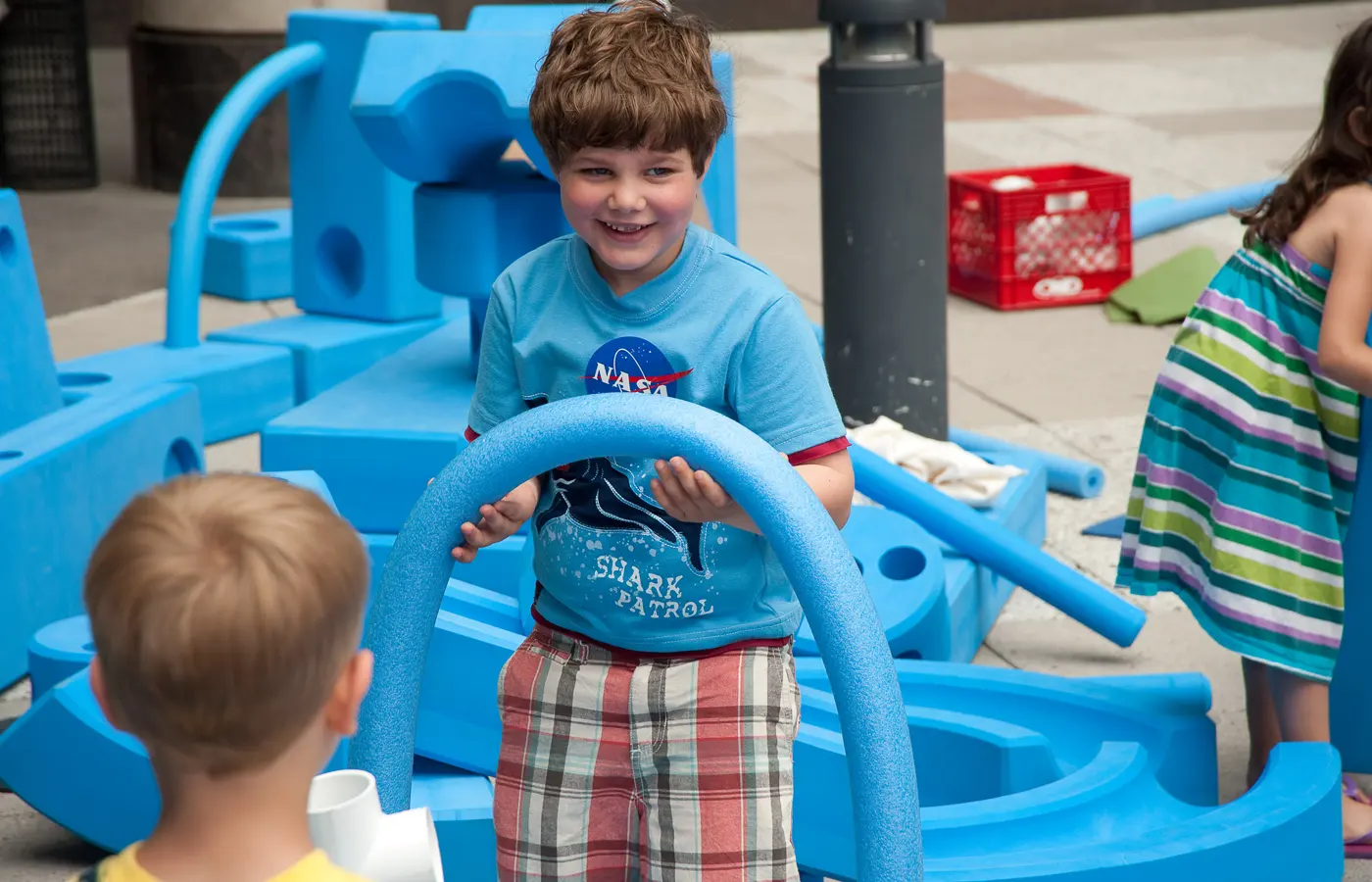Imagination Playground combines the benefits of many different play activities, including dramatic, constructive, and gross motor play.
Imagination Playground blocks are an easy and safe way to help kids learn lessons that are fundamental to growing up happy and healthy.
Child development experts have long known that unstructured free play and block play help children in all areas of development: intellectual, social, physical, and emotional.
Unlike toys, which often are limited in the number of ways you can play with them, blocks are open-ended. They empower children to use their imagination to build their own world, rather than inhabit one we create for them. Kids try new things and stretch their abilities. They experience their own triumphs and accomplishments. They make their own mistakes and learn their own lessons. And they love doing it.
Read the Research:
Play with blocks is linked to improved performance in math test scores, higher language development scores, pre-literacy preparation, and problem solving skills.
Read the Research:
Children’s play with blocks can develop social skills and give children an opportunity to practice positive behavior.
From Daycare and Early Education Magazine, 1987.
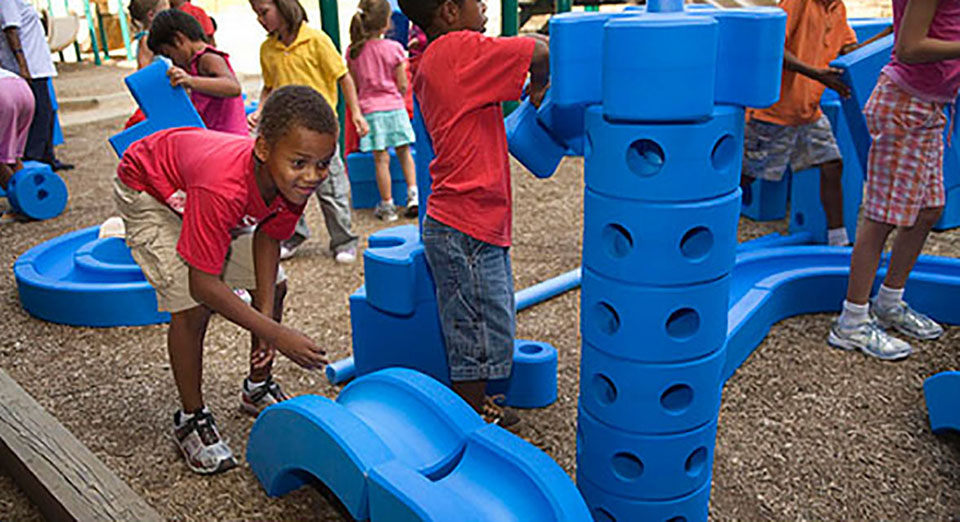
Imagine your child having more fun.
Imagination Playground’s oversized blue blocks are like nothing your kids have ever seen before. They’re oddly formed with unique, abstract shapes that make kids curious and want to start building immediately.
There’s only one way to go down a slide or back and forth on a swing. With Imagination Playground, kids never build the same way twice. They stay entertained and engaged for longer periods of time and don’t get bored.
Kids love to turn things upside down and make their own rules, but most playgrounds discourage that. Imagination Playground is a safe way to give kids what they want the most: a way to control and shape the big world around them.
Want to Bring the Fun Home?
Imagine your child more creative.
Imagination Playground blocks spark imagination and creativity in children of all ages, including teenagers and adults.
With their uniform blue color, abstract shapes, and infinite configurations, Imagination Playground blocks get kids’ minds working fast and keep them active. Instead of prescribing activities (climb this, sit on that), the blocks prompt kids to “fill in the blank” with their own ideas. Imagination Playground blocks can be used to make anything a child can think of. They overflow with creative potential for children to play, dream, build, and explore endless possibilities.
Kids quickly create make-believe objects and worlds in which they can become completely absorbed. Child development experts call this “deep play.” Some parents describe their child as being “in the play zone.” Either way, it’s important. Uninterrupted stretches of focused and immersive creative play is how kids learn about their world through first-hand experiences. And in a time of packed schedules and increasing electronic “screen time,” it’s getting harder for kids to have.
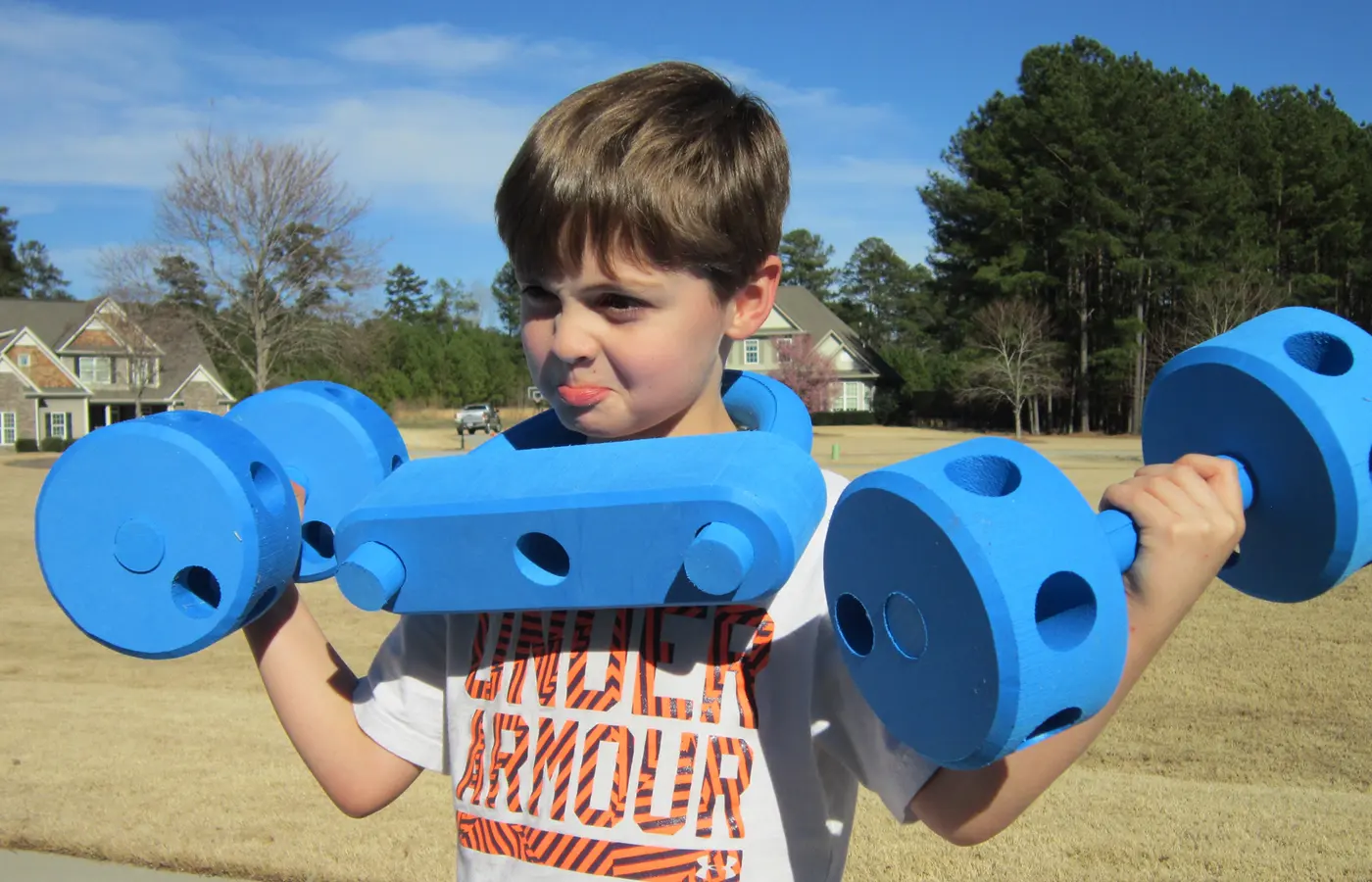
Parents' Stories
“I want to see him using his brain and make sure that he’s moving his body and getting exercise. It’s fun to see him happy—just to see all the kids smiling and laughing and engaged creatively.”
Melissa
“When I watch my kids play, I’m looking to see them smile. And that’s all I saw today, just big grins. They’ve been running around. They’ve had a great time. At the end of the day, that’s really what’s important.”
Regina
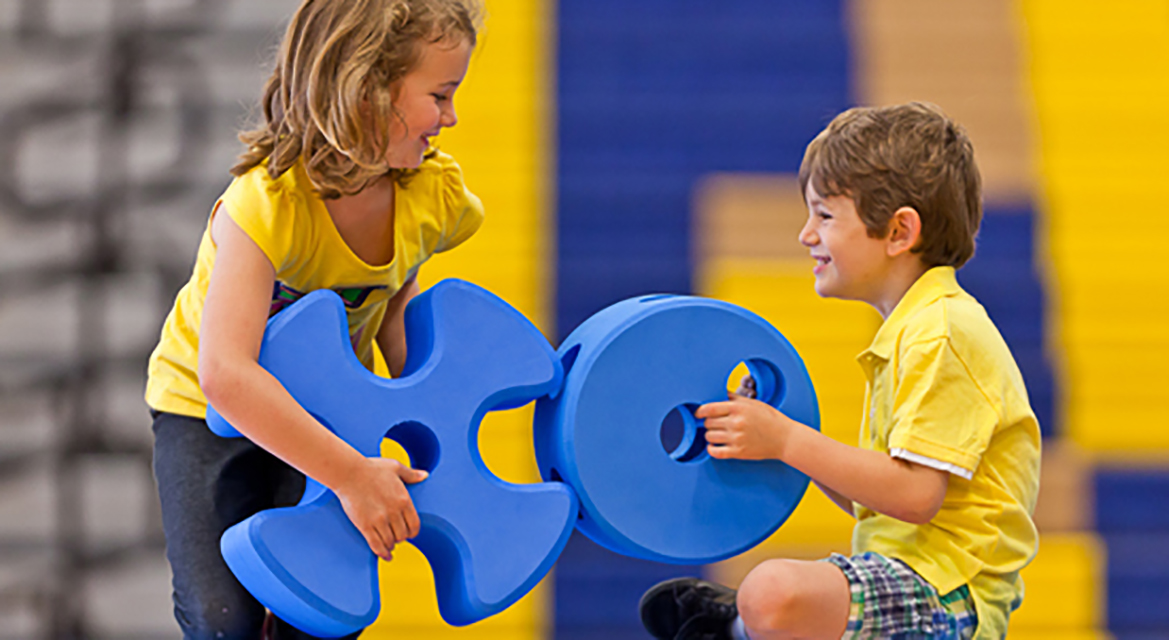
Imagine your child more social.
Imagination Playground blocks are designed to encourage instant sharing and collaboration. The blocks are deliberately oversized, so kids will be more likely to help each other with them.
Size matters—to kids of all ages. Younger, smaller kids may need help balancing and moving them, so they work in pair or small teams. Older, larger kids quickly realize that if they want to build structures that are bigger than life, they need to plan and work together with other children.
The social challenges and valuable lessons of cooperation and group activity are built right into the experience of playing with Imagination Playground blocks. Children assume leadership roles on their own, take responsibility for their share of the work on their own, and work to resolve disagreements on their own.
Imagination Playground blocks are also one of the few opportunities for kids of different ages to meaningfully play together. Children can work side by side, each creating at their own developmental level. Cooperative cross-age play is very common, especially among siblings. You might find yourself engaged in play with your child in a whole new way.
Ready to See Your Kids Build, Share, and Create Together?
Imagine your child more active.
Imagination Playground’s large foam blocks make it easy for children to build big. They can build structures that they can stand on, walk on, and enter. Lifting, balancing, carrying, stacking, and placing blocks encourages full body movement, helps exercise gross motor skills, and helps develop large muscle strength.
Once the construction is done, even dramatic play can be more active, with large-scale settings (i.e. stages, forts, etc.) inspiring more large-scale movement.
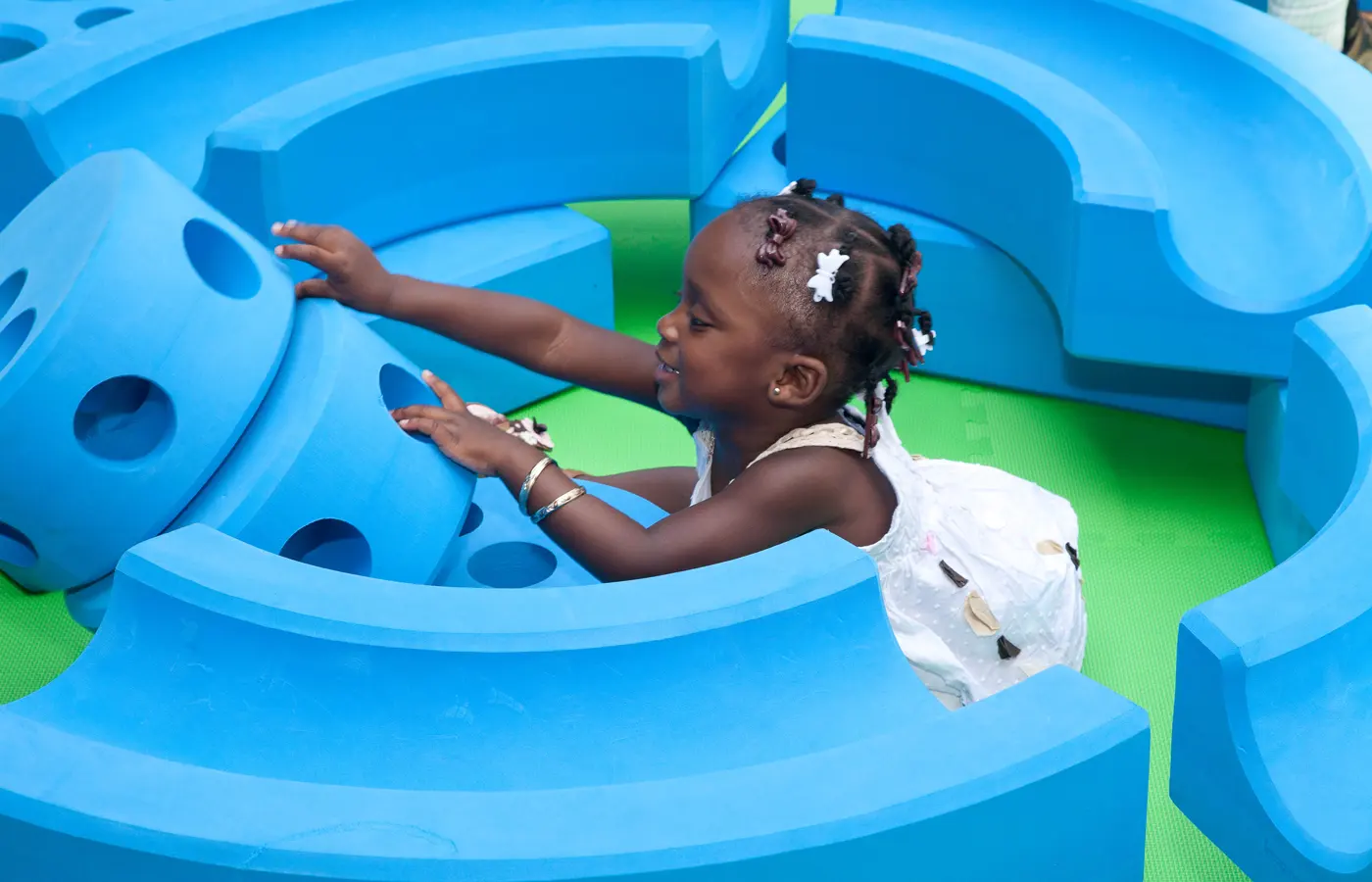
Parents' Stories
“I’ve been so worried about my 4-year-old because he is developmentally delayed. It was an amazing feeling to watch him just almost blossom in a matter of an hour.”
Rachel
“I think that a lot of kids, they just want to watch TV or they want to be told how to be entertained, but here they’re entertaining themselves.”
Julie
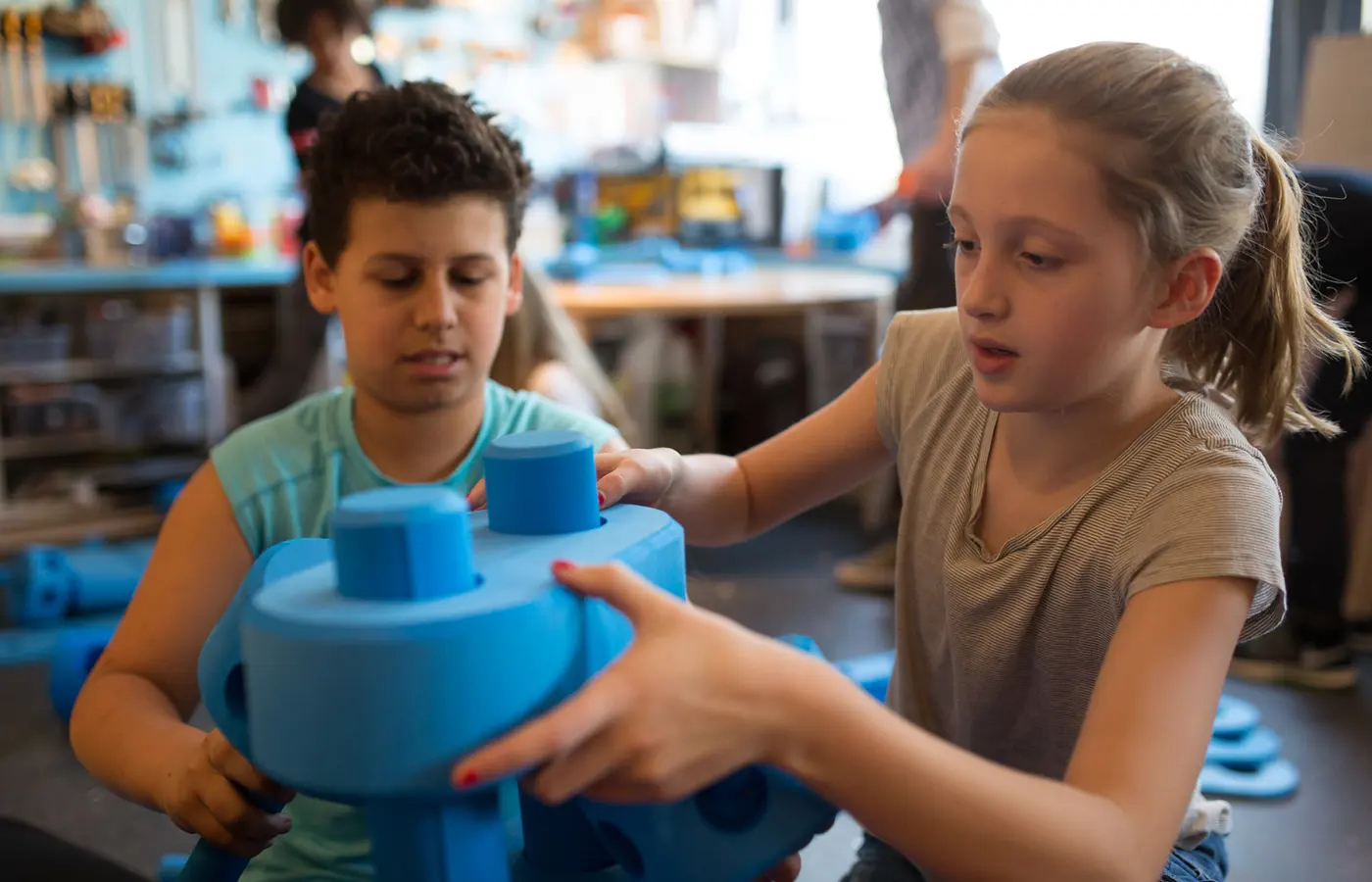
Imagine your child learning more.
Imagination Playground encourages children to exercise problem-solving skills and complex thinking. Playing with blocks involves many math and science skills that can have a real impact in the classroom, including classification, size relationships, shapes, counting, height, width, area, fractions, and ordinal and cardinal numbers.
Imagination Playground blocks can also help children develop spatial relationships, include the concepts of interior and exterior, open and closed, and near and far. Play scenarios as simple as building a house that they can enter or creating a wall to pen in imaginary farm animals give children concrete examples of how space is defined that they can draw on later.
Imagine your child more confident.
Whether it’s a two-year-old building a simple tower or a six-year-old inventing the story of a rocket trip to Mars, children get a sense of accomplishment. By adding a new section to a structure or adding a second “engine” to the rocket, a child can completely change the direction of their play with immediate and visible results. Imagination Playground blocks enable children to have experiences that contribute to the development of their self-confidence.
With Imagination Playground, your child is in control. Though the objects and scenarios they create are imaginary, the confidence they feel is very real.
